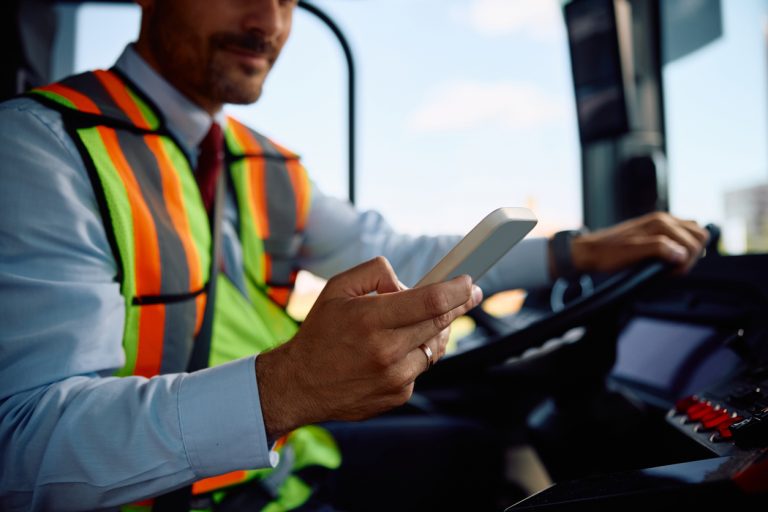Construction injuries cost the industry roughly $11.5 billion per year, according to the National Institutes of Health. One type of concern and collision the industry must consider is car crashes.
These collisions can cause harm to those working on road construction projects—and they can also cause serious dangers for those driving to and from sites. April is Distracted Driving Awareness Month, so it’s a perfect time to reexamine the risks associated with driving distracted while working.
The Risks of Distracted Driving at Work
The NSC (National Safety Council) suggests you are four times as likely to crash when using a cellphone while driving, and employers are liable for $25 million for employee crashes, even when using hands-free devices. That is a significant amount of risk and a significant amount of responsibility.
Another report shows 70% of businesses experience the impact of distracted driving incidents, with 68% citing mobile phone use as the leading cause, according to Teletrac Navman, and 49% report distracted driving has a direct financial cost on business. While the birth of cellphones usage in vehicles has risen significantly since its introduction—of the initial cellphone from inventor Martin Cooper—it is clear the role of cellphones in vehicles, fleets, and anywhere else for that matter is having an impact on business productivity and overall safety.
Employers are responsible for making sure workers follow all laws—and for ensuring the safety of all workers. And that means minimizing distracted driving or walking on the job often starts at the top.
The Case for Safe Driving
Let’s consider an example. Owens Corning is a company with more than 15,000 employees in 27 companies that provide material innovation for roofing, insulation, composites, and doors. Matt Schroder, internal communications and corporate media relations leader, says the company’s performance in safety had reached a point where injuries had significantly decreased, so it could continue to focus its efforts on eliminating risk before an injury happened.
Here the team reviewed the National Safety Council data and other public sources of information to determine how to create a policy and a culture of safety around cellphone use. The policy became no cellphone use—handheld or hands-free—and it covers all drivers and applies to any situation where an employee is conducting any business.
The CEO adhered to it for 90 days before it became company policy and the team:
- Used the NSC Cell Phone Policy Kit and videos as a base for the plan
- Determined key stakeholders across the organization
- Identified potential issues with the policy
- Tried to address any issues in advance
- Recruited champions from a group of stakeholders
- Created the campaign
- Laid out the plan in a global town hall
- Implemented it over a 60-day period
While this is one example, many companies now have cellphone policies in place that identify how to interact with devices in vehicles and fleets. Training and developing a culture of safety are only two pieces of this pie though.
The Case for AI
In many cases, technology is a foe in the vehicles—but can it also be a friend? Can technology help prevent the use of devices in vehicles? This is a question I have been asking here at Connected World, Constructech, and The Peggy Smedley Show for years.
Let’s look at some of the recent data. Teletrac Navman released the results of its AI & Driver Safety Survey, which is a part of its 2025 Distracted Driving and Driver Safety Report. It found 83% of fleets say AI is the future of safety. How?
Respondents say AI will be used to:
- Monitor driver behavior (32%)
- Predict and prevent potential accidents (17%)
- Reduce distracted driving incidents (16%)
- Improve vehicle maintenance (14%)
- Enhance coaching and training through data (13%)
Still, there are many potential roadblocks to using AI in this area. Roughly 23% are concerned about data privacy and 14% are worried about driver resistance.

What are your thoughts? How can we solve the distracted driving epidemic in business? Does it start with a culture of safety? We have been making that case for decades and still too many lives are lost by people who think they can multitask at the expense of another’s life lost at a jobsite or when someone is driving gets distracted. Can training and technology help to curb distracted driving and unsafe behavior while behind the wheel?
Want to tweet about this article? Use hashtags #construction #IoT #sustainability #AI #5G #cloud #edge #futureofwork #infrastructure #JustDrive #distracteddriving


